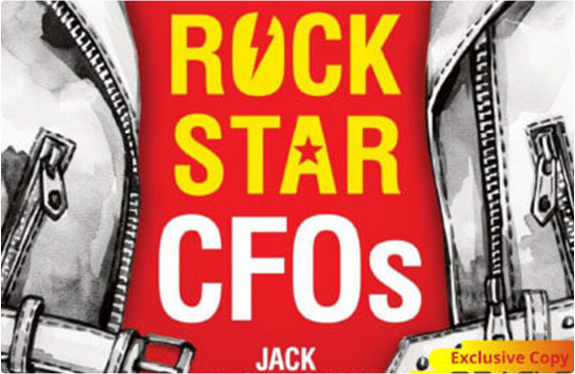De-SPAC transactions took off in 2020 as a fast way for private companies to become public — and to access public-market funds. That year and the next, special-purpose acquisition companies, or SPACs, that led the charge accounted for most of the initial public offerings (IPOs) on Wall Street, garnering a lot of attention as they raised billions and then looked to merge with high-potential private companies.
The exuberance has since faded, due to current economic conditions and the fact that many SPAC mergers have underperformed compared with expectations. However, this decades-old idea still has some currency. Given the right circumstances, a de-SPAC transaction could make sense for a private company that understands what’s involved and decides to proceed.
What Is a De-SPAC Transaction?
A de-SPAC transaction is one in which private companies go public by merging with special-purpose acquisition companies (SPACs). SPACs are basically shell companies with no tangible assets other than the cash they have received from investors.
Private equity, venture capital and asset management professionals are the most common SPAC sponsors. Their purpose in starting the SPAC is to produce a positive return on investment by finding and acquiring or merging with one or more promising private companies. In an ensuing, successful de-SPAC transaction, the public shell company is reorganized around the target company (or companies), which now has the cash that the SPAC previously had received from investors — minus the funds returned to early investors in return for their equity.
Consider a hypothetical example: A San Francisco asset management company forms a SPAC called Roan Stallion Capital, which raises $200 million in an IPO and puts the money in a trust account. From that day forward, Roan’s management team begins looking for one or more operating companies Roan can acquire. Within nine months, they find and successfully merge with a high-end jewelry e-retailer called Thinner Air. The transaction — in which the SPAC and its target, Thinner Air, are reorganized as a new publicly traded company with a different name than Roan Stallion Capital — is known as the de-SPAC.
Key Takeaways
- SPACs and their subsequent de-SPAC transactions provide an alternative to traditional initial public offerings.
- Some private companies are drawn to de-SPAC transactions because of the valuation certainty they provide, they are easier and less expensive than traditional IPOs, and they have relatively light disclosure requirements.
- An increasing number of de-SPAC deals have sputtered lately — either failing altogether or raising much less money than expected — leading to a more cautious view of these transactions.
- Private companies considering de-SPACs should understand that these mergers may force them to amend some of their executive compensation practices.
De-SPACs Explained
High-growth private companies always need capital. They have many options for obtaining funding — from personal savings, through bank loans, from friends or family or from private equity or venture capital investors. They can also raise money through an IPO of stock.
Like an IPO, a de-SPAC transaction takes advantage of the capital-raising potential of public equity markets. A de-SPAC transaction occurs when one or more private target companies agree to be acquired by a SPAC, which has itself completed an IPO and is looking for targets to buy. Once the acquisition is complete, the resulting entity reorganizes and the target company — the one with products, customers and revenue — emerges as the public, operating business — with access to the SPAC’s cash, minus any funds distributed to early investors in return for their equity.
SPACs have become a popular Wall Street tool in the past few years. There were 861 SPAC IPOs in 2020 and 2021, representing 57% of all IPOs in the U.S., according to Nasdaq. Many of these SPACs still haven’t found a target company, which means tens of billions of dollars are still waiting to be invested. For many private companies, de-SPACing is an intriguing opportunity that could give them access to significant capital and allow them to become public faster than would otherwise be possible.
How Does a De-SPAC Work?
In a de-SPAC transaction, a private company agrees to be acquired by a special-purpose acquisition company. SPACs are public companies that have raised funds from investors on a “blank check” basis, meaning the shareholders don’t know which company the SPAC’s sponsors will ultimately try to buy, although they are typically aware of the various types of expertise possessed by the SPAC’s management team.
A SPAC usually has a limited time, 18 to 24 months, to identify and acquire one or more target companies with funds it has raised. Once an acquisition offer is made, the wheels of the de-SPAC are set in motion. This includes creating a set of detailed statements for review by the Securities and Exchange Commission (SEC), after which the SPAC’s shareholders must vote on the merger. If the merger is approved, the private company starts trading publicly and becomes subject to SEC filing requirements and regulations.
The De-SPAC Timeline
After a SPAC and its target company announce their merger agreement, the first phase of the de-SPAC begins and the companies file an S-4 proxy statement with the SEC. The S-4 form provides financial information about the two parties, along with other information that shareholders may be interested in, such as the history of the target company, information about its industry and the backgrounds of its founders and executives. Sometimes the SEC will ask the merger partners to clarify certain pieces of information in the S-4. This first phase usually takes between two to four weeks to complete.
Once the S-4 is on file at the SEC, the merger parties determine the date that shareholders will vote on the merger. A proxy solicitor is hired and begins the process of contacting shareholders to inform them of the upcoming vote and to encourage them to participate. This second phase generally takes another two weeks to complete.
In the final phase, which lasts about two weeks, the target company holds a road show to meet with the SPAC’s shareholders to sell them on the benefits of the merger. If the transaction goes through, the parties will file another document with the SEC, which is called an 8-K. The 8-K form announces the conclusion of the deal, at which point the target company becomes the surviving entity in the merger.
From beginning to end, the whole de-SPAC process may take as little as six to eight weeks to complete, in a best-case scenario. The process can take up to several more months, however, depending on the length of the SEC’s review of the necessary filings.
The De-SPAC Process
For private companies looking for capital to fund growth, a de-SPAC can offer an accelerated path to that goal. In many other ways, using a de-SPAC transaction to gain access to public capital is similar to the IPO process. There is an intense period of work after the merger plan is announced to complete regulatory filings and answer questions from prospective shareholders. The selling of the deal typically happens in a road show over the course of several weeks, after which shareholders have the right to either commit to the merger or not. This last part differs from an IPO in that a SPAC has already raised money, whereas an IPO involves raising new capital. For the company hoping to become public, however, the stakes are the same: They can raise the capital they’re hoping for, they can get more than they’re hoping for, or they can get less.
Advantages of De-SPACs
Some private companies find the de-SPAC concept intriguing for several reasons. Here are three of the biggest.
-
It provides a faster route to a public listing. Private companies that merge with a SPAC can sometimes become public within two months of agreeing to the deal. This process is significantly faster than the typical IPO process, which often takes six to nine months. SPACs have also been a means for earlier-stage companies with shorter operating histories to access public markets because there are fewer disclosure requirements. However, some recent SEC proposals could tighten the disclosure requirements for target companies.
-
Companies rely less on near-term market sentiment. Private companies that want to go public must sometimes wait for investor sentiment to turn positive in their industry — or for investors to become more positive toward the stock market in general. Because SPAC investors have already committed their capital, the private companies targeted in these deals don’t have to worry as much about the IPO window closing.
-
Shares experience less volatility related to insider sales. In a traditional IPO, insiders typically can’t sell shares for 180 days. This rule is designed to keep large shareholders from flooding the market with stock and depressing the price. After a de-SPAC, the required holding period for insiders is usually longer, about 12 months. This provides some downside protection for the shares of the newly public company.
Disadvantages of De-SPACs
De-SPACs also have some characteristics that cause prospective target companies to shy away from them. Here are three potential drawbacks.
-
Shareholder redemptions could lead to a lost deal. SPAC shareholders can redeem their shares in the days leading up to the de-SPAC event. That means, for instance, that an investor who originally put $100,000 into the SPAC might take the money out instead of exchanging it for shares in the private company. If there are enough late redemptions, the target company could decide it is not getting what it wants out of the transaction, and the whole deal could fall apart.
-
Deals may raise less money than expected. Dissolved deals are not the only problem when SPAC shareholders pull out. Deals can also simply not yield anywhere near the capital that the private company was counting on. A case in point is Virgin Orbit, the Richard Branson rocket ship company, whose merger with a SPAC company in late 2021 brought in less than half of the $483 million that was originally expected.
-
Companies are exposed to the downsides of being public. Once they go through the de-SPAC process, private companies will never again be able to shield their financial information from competitors. They will also have to deal with overhead expenses that are specific to public companies, such as for preparing financial statements for regulators and shareholders. Finally, the day-to-day fluctuations of their stock can become a distraction for both employees and senior executives.
De-SPACs and Executive Compensation
In a de-SPAC transaction, executives’ employment agreements will inevitably become public. Institutional shareholders might balk at prerequisites that they consider excessive; they may also question compensation arrangements that they realize fall below market norms. Any stipulations institutional shareholders see that they don’t like could be a reason to amend aspects of the management team’s contracts.
A private company’s merger with a SPAC could also have implications for the timing of equity compensation programs. Under U.S. security laws, there is typically a 60-day delay after a de-SPAC deal before equity incentive awards can be granted to management. One possible workaround for this delay to limit the impact on executives: Companies can use the closing-day share price as the basis of the equity awards and give vesting credit starting on the merger’s closing day.
Finally, most mergers trigger change-in-control clauses, resulting in an immediate vesting of executive stock options that might not otherwise vest for months or years. This isn’t always the case with de-SPAC events, which are sometimes viewed differently and don’t trigger change-of-control provisions. In any event, this is an area where the target company may seek to get clarity.
With de-SPACs under your belt, you’re one step closer to rockstar status.

De-SPACs and Healthcare
Healthcare companies are, in some ways, a natural target of SPACs and de-SPAC transactions. Many healthcare companies are relatively young and have highly promising treatments or devices that often take an extended period of time to receive regulatory approval. For some of these companies, the prospect of raising significant capital through a public-market transaction is appealing, since the money might allow them to focus on their product-development work. Digital health, in particular, including telehealth, has been a focus for some SPAC sponsors during the pandemic.
In the first quarter of 2021, more than 42 healthcare-focused SPACs formed, raising more than $11 billion, according to S&P Global Market Intelligence. The number of healthcare-focused SPACs, as well as the amount of capital raised, has dropped considerably since that time. This is partly because of the poor performance of certain healthcare de-SPACs.
For instance, the redemption rate on Jasper Therapeutics, a stem cell-focused biotech company, was 93% in the days leading up to the transaction, meaning the company received only a small fraction of the money it had expected. The cooling-off of the healthcare de-SPAC market is also due to new proposals the SEC issued in March 2022 that would result in tighter regulations for SPACs.
History of De-SPACs
SPACs and de-SPACs aren’t new. They were developed in the 1990s as a successor idea to blind-pool or blank-check investment funds. Blind pools, which raise capital without telling investors how the money will be spent, came under heavy criticism in the 1980s when they were implicated in penny stock fraud schemes that swindled investors.
SPACs and de-SPACs burst into prominence in 2020 as a way to take technology companies and startups public. There were 64 completed de-SPAC combinations in 2020 and 199 in 2021. The excitement has dissipated in 2022 — and the deal numbers have decreased — amid poorer-than-expected de-SPAC outcomes and talk of increased regulations.
How NetSuite Can Help
A company considering a de-SPAC transaction IPO needs high-quality financial information, both to accurately convey its operating results to the blank-check company that is pursuing it and to prepare itself for the rigors of operating as a public company. NetSuite Cloud Accounting Software can help with this. It lets financial executives generate many of the statements and disclosures required by government regulators. And the historical view into financial and operating data it provides simplifies the task of presenting information to would-be investors. It also makes it easier to develop the S-4 document that is a prerequisite to every de-SPAC transaction.
A de-SPAC merger transaction is a mechanism that allows private companies to go public and gain access to public-market funds. De-SPACs aren’t risk-free, though, and any private company that is considering one should have a clear picture of the pros and cons. It is also important to be aware of changes taking shape in the regulatory arena.
#1 Cloud ERP
Software
De-SPAC FAQs
What is a de-SPAC process?
A de-SPAC process allows a privately held operating company to become public by merging with an already-public shell company called a special-purpose acquisition company (SPAC). When the merger is completed, the operating company becomes public and gets to use the capital of the now-dissolved shell company.
How long is the de-SPAC process?
De-SPAC transactions generally take about six to eight weeks to complete. This includes the time spent preparing regulatory documents, meeting with prospective shareholders and holding the shareholder vote, which is one of the last steps in most de-SPAC processes.
What is de-SPACing?
De-SPACing is a merger transaction that allows a specialized shell company, called a SPAC, to put its money into a private operating company that will then trade in the public market. Once the merger is complete, the operating company becomes the surviving entity and the SPAC dissolves.








